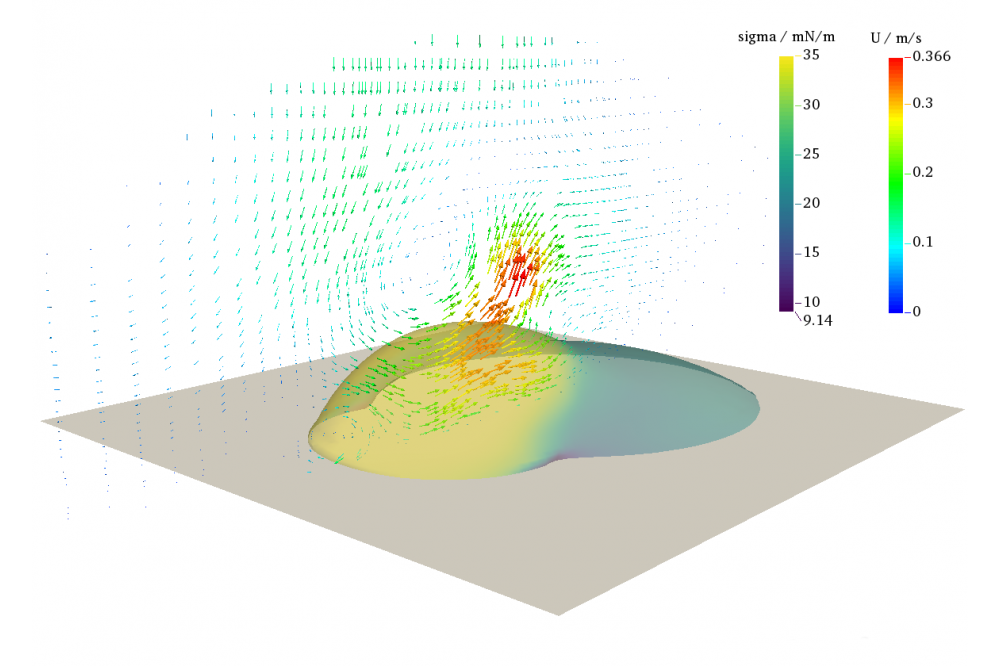Numerical Simulation and Analysis of Wetting Phenomena in Inkjet Printing
Einleitung
Droplet impingement and spreading are of particular relevance for various technical applications, including inkjet printing. The small length scales of only a few microns, however, pose a limitation to experimental observations. Therefore numerical simulations of droplet impingement, spreading and coalescence are conducted within the scope of this project. Special focus is thereby put on the interaction between heat and species transport processes on one side and the wetting process on the other side.
Methoden
To gain a better understanding of the underlying transport processes, numerical simulations of droplet spreading with coupled surfactant transport as well as heat transfer were performed. The two-phase flow is described using the algebraic volume of fluid method implemented in the open source CFD library OpenFOAM. The contact line dynamics are modeled using a hydrodynamic subgrid scale model. Furthermore, the two-phase flow solver was extended to account for the transport of soluble surfactants using a two field approach. In addition, our in-house extension for conjugate heat transfer was used to describe the heat transfer between droplets and substrate. By including appropriate surfactant concentration and/or temperature dependent material models, heat and species transport are coupled to the momentum balance. The code employs acceleration techniques such as adaptive mesh refinement and load balancing.
Ergebnisse
Adding to results from the first project period, a strong influence of the Marangoni effect on the flow profile within a surfactant laden droplet, especially in the early stages of spreading in the capillary/viscous regime could be observed, while in later stages, thinning of the surfactant concentration becomes more and more important even for soluble surfactants (Antritter et al., 2019). First simulations of off-centered droplet collisions indicate a strong influence of local surface tensions on the evolution of the collided drops (see Figure 1). Further results from the present project period show increased spreading velocities for pre-heated impacting droplets due to their decreased viscosity. Upon impact, however, the droplets base including the threephase contact line region is abrubtly cooled down, resulting in locally increased viscosities. The initial droplet temperature is therefore observed to be especially important for early spreading dynamics with little influence on the wetting behaviour on intermediate to later times.
Diskussion
The results give insight to the influence of heat and species transport processes on impingement and spreading of micrometer-sized droplets. The numerical method is able to capture topological changes during droplet impingement and collision. We plan to extend our investigation of off-centered droplet collision and coalescence on the substrate. Similar to the simulations of single drop impingement conducted in the present project period, these investigations require high spatial and temporal resolution. In conjunction with the asymmetry of the problem, this makes the use of a High Performance Computer indispensable.




